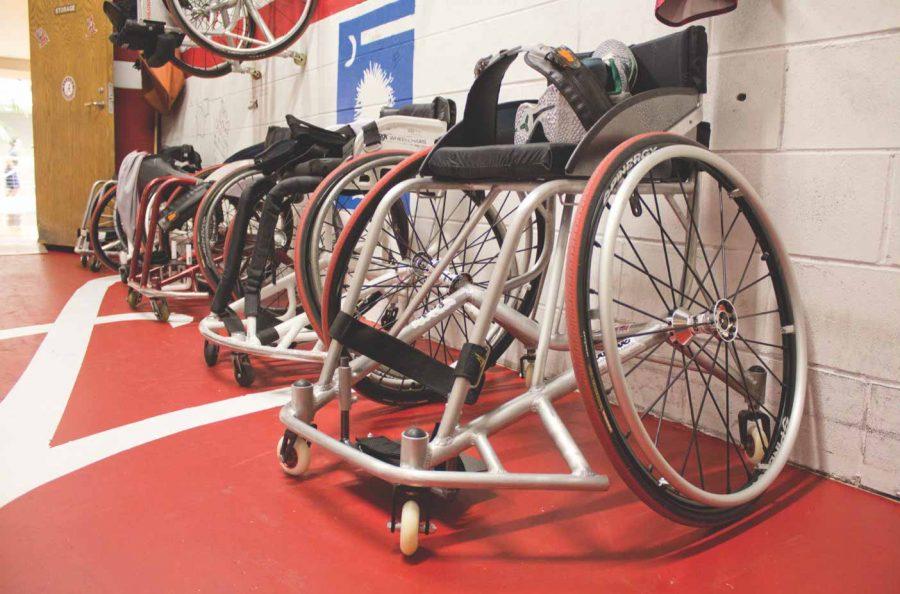Disability access on campus is the focus of Crimson Access Alliance, a new group on The University of Alabama campus with plans to foster a safe environment for those with needs for alternative access to buildings around campus. The organization’s first meeting will be held Tuesday, Sept. 17, at 7 p.m. in Manly Hall Room 102.
“Having a club like this that celebrates disability culture will help shatter these myths and support a more realistic understanding of disability,” Nirmala Erevelles, advisor for the CAA and professor of education, said.
CAA President Sierra Rodgers-Farris, a gender studies graduate teacher, and Vice President Kathryn Bornhoft, an anthropology undergraduate, said they want this group to be a community for people with any type of cognitive, physical or mental disability or interest in disabilities.
When she was 14 years old, Bornhoft was diagnosed with fibromyalgia in her joints. Fibromyalgia is a newly diagnosed disease that causes pain in concentrated areas in a way similar to arthritis.
“People used to think I was a hypochondriac. They didn’t understand or believe me,” Bornholf said.
Rodgers-Farris, who has cerebral palsy, said sometimes people give her dirty looks for taking the handicapped parking spot if it happens to be a day when her cerebral palsy is not as visibly apparent.
“The problem with a lot people is part misunderstanding and part lack of knowledge,” Rodgers-Farris said.
The University’s Office of Disability Services, located in Martha Parham Hall East, aims to assist and equip students and faculty to meet their needs, but the CAA hopes to promote the idea that more can be done for people with disabilities at the University, Rodgers-Farris said.
The group’s goals for the upcoming year include attaining easier access for people with disabilities to bathrooms and parking across campus. Some recent changes have been made. Ten Hoor Hall now has sidewalks leading to the new disability-accessible entrance.
While the University is making positive changes, Rodgers-Farris said many of the buildings still only have disability-accessible entrances at the back of the building instead of the front. Many, such as Gorgas Library, have ramps behind walls so other students can’t see them, Rodgers-Farris said.
“Nobody wants to see a handicapped person,” Rodgers-Farris said.
Erevelles said she hopes this organization will “open eyes” to some of the ways The University of Alabama handles people with disabilities.
“We reluctantly try to ‘accommodate’ disabled people in the most minimal way in order to barely meet ADA requirements and avoid lawsuits,” Erevelles said of the University’s current policies concerning disability access.
The Americans with Disabilities Act of 1990 outlawed people or universities from discriminating because of a disability. The CAA hopes for the University to actively embrace people with disabilities rather than simply obeying law.
“People have very stereotypical notions of disability. Not all people use wheelchairs. Disabled adults are not childlike. Some disabilities are not visible,” Erevelles said.
Additionally, the Crimson Ride buses present a huge inconvenience for a person with disabilities. Rodgers-Farris said there is only one handicapped spot, and often they drop off students at spots that can be very far from buildings.
“When you have no option B, then you have to put yourself in a position where you’re in pain,” Rodgers-Farris said.
Other issues of concern for the group include the lack of handicapped-accessible stalls in every bathroom and the general lack of handicapped-accessible water fountains throughout campus. The CAA plans for members to stage awareness events, send mass letters and possibly petition.
“Ensuring access is akin to ensuring that everyone is welcome in almost every place on campus,” Erevelles said.
Rodgers-Farris said the CAA also hopes to advocate a stronger understanding for fellow students with disabilities until change is eventually enacted.







